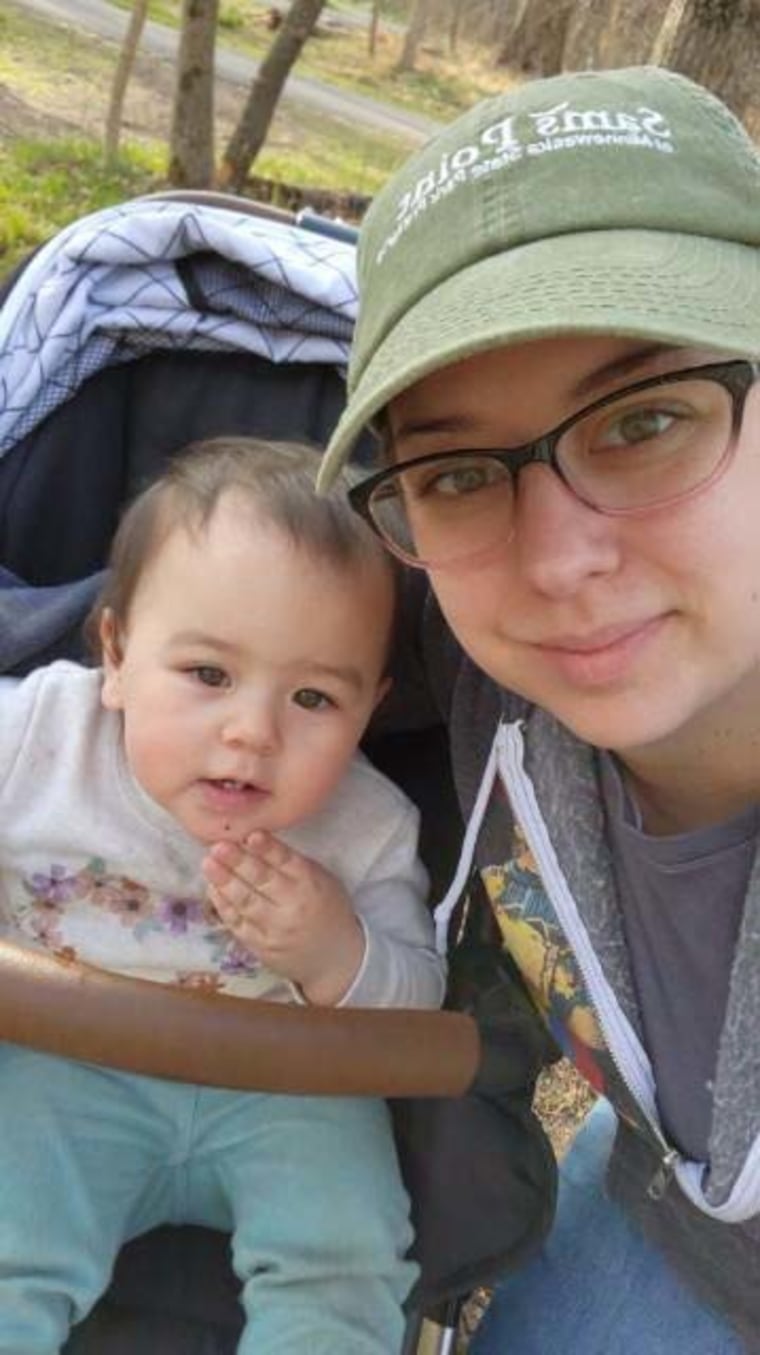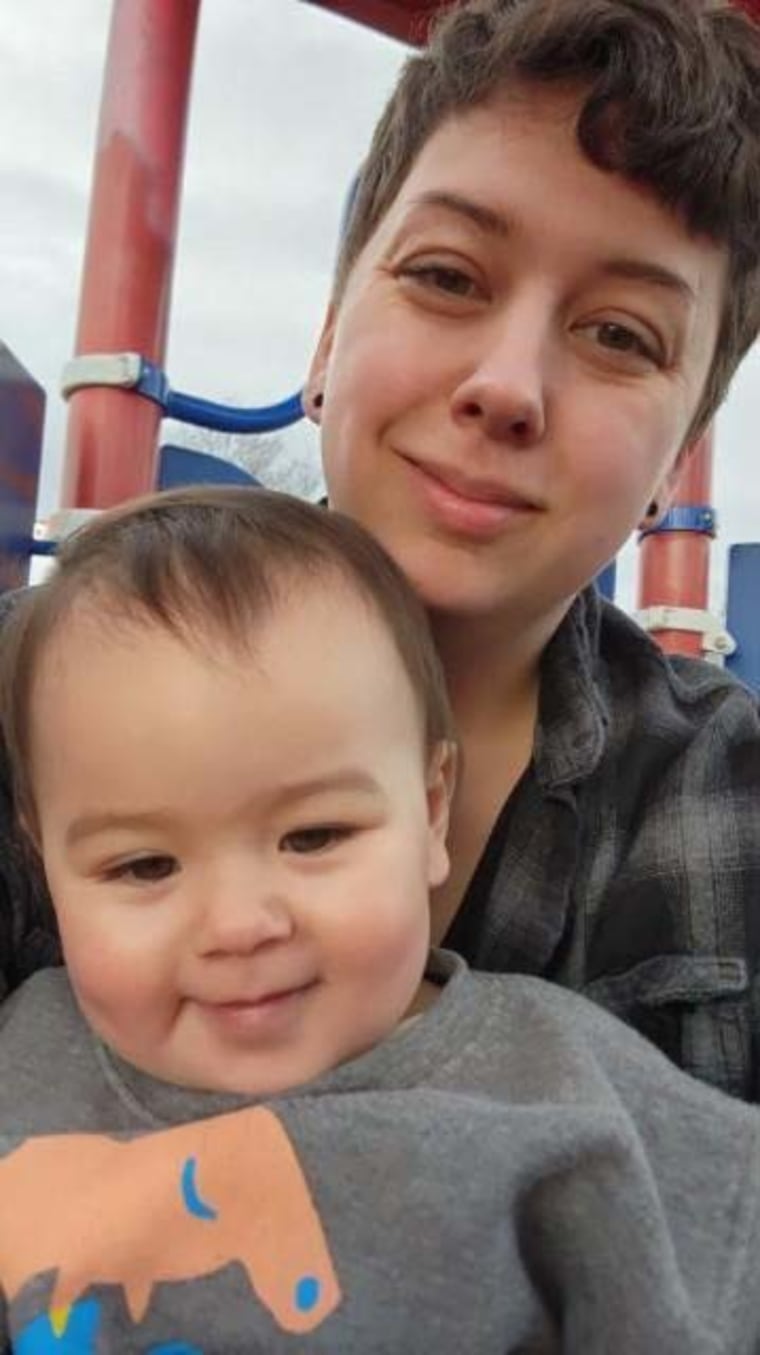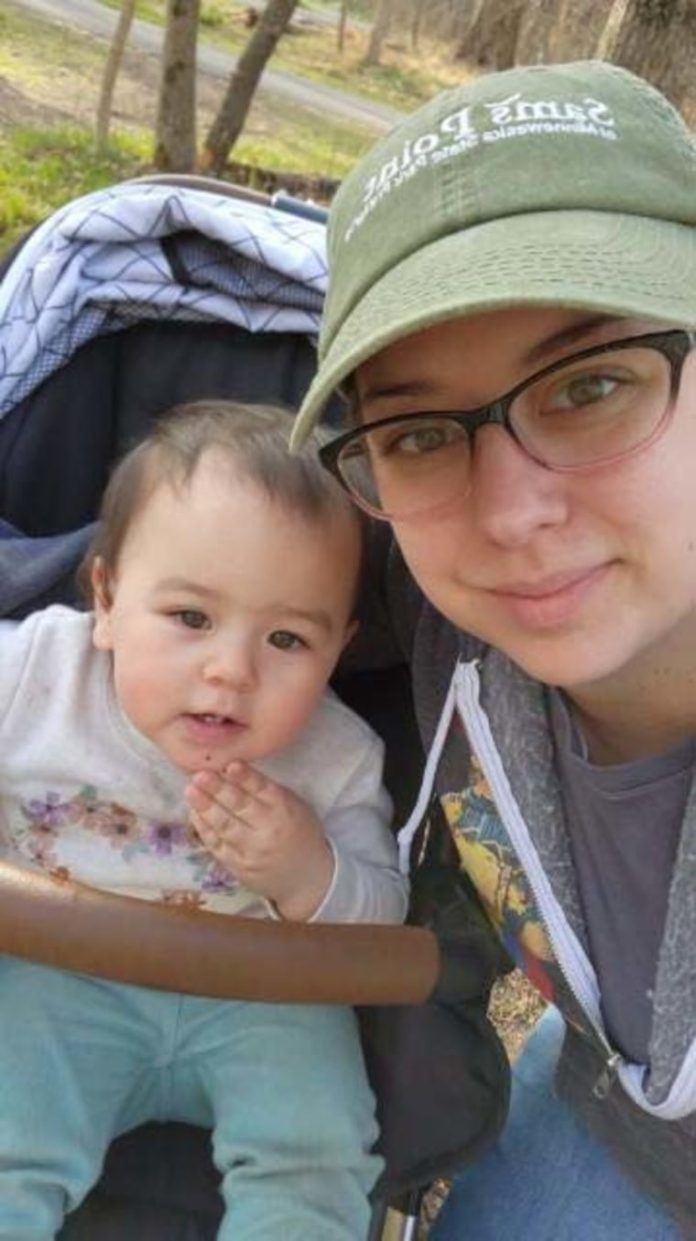In January, Amanda Lenza’s head hurt. The pain radiated from the back of her head to the front of her face for five days. One day, she stood up, wobbled and suddenly experienced double vision.
“That really took me off guard,” the 32-year-old freelance ghost writer from Lorain, Ohio tells TODAY.com. “I started texting my husband. I was like, ‘This is really weird. I don’t think something is right.’”
Then she lost feeling on her left side. Her husband returned home and called an ambulance.
“I asked (the paramedics) pretty much straight to their faces, ‘Am I having a stroke because I feel like these are stroke symptoms,’” she recalls.
Every stroke symptom within 15 minutes
Lenza and her daughter were watching cartoons when she noticed her balance was off kilter. Then she started seeing two of everything. After she texted her husband for help, her symptoms worsened. She could no longer sit up and slumped onto the couch. Her speech felt garbled. When she tried to move her left hand, she couldn’t. Then her face drooped on the left side. When she got to the hospital, her symptoms peaked.
“I couldn’t speak at all,” she says. “I couldn’t move that side of my body at all … I started having trouble breathing.”

Doctors in the emergency room performed a CT scan and noticed her vertebral arteries were blocked. To help, they gave her a “really strong clot buster,” a type of drug that breaks up blood clots clogging arteries that can lead to stroke. While that often helps, it didn’t for Lenza.
“I got worse, much worse,” she says.
Doctors sent her to Cleveland Clinic’s main campus via helicopter.
“I couldn’t really see straight or sit up, but I was cognizant,” she says. “All of my brain damage was in my cerebral cortex and pons (part of the brain stem) so, physically, it was affecting me. Mentally, I was still completely aware.”
She felt terrified and wanted to see her daughter. After the staff confirmed she was having a stroke, she worried she was going to die or never recover.
“I was just wondering how if I made it, how much of my bodily function would I get back? Would I ever be able to talk again? Am I going to be able to take care of my toddler,” Lenza says. “I was scared.”
Doctors rushed her into surgery to place stents in her vertebral arteries, the two arteries that run through the back of the neck to the brain. They could only open one. It’s rare for people to experience tears in both.
“The left one is completely blocked. It’s permanently damaged,” she says. “They put three stents into my right vertebral artery.”
After doctors took out her breathing tube, she could sit up and move and talk again. A day later she could get out of bed to walk, though it took time before she felt confident moving.
“It took me a couple weeks to re-learn how to walk completely,” she says.
Doctors wanted to understand why Lenza experienced a stroke at such a young age and discovered she has fibromuscular dysplasia, “which affects the main arteries in your body.” The National Institutes of Health says the condition causes unusual cell growth in the artery walls that contribute to the arteries contracting or bulging.
“Most people live with it and never know they have it,” she says. “ In my case, (my arteries are) too weak.”
Doctors suspect that a recent illness had contributed to Lenza’s problems, she explains. In early January, she had been sick for three weeks. She had been lying down and coughed hard with her head turned, which likely caused the rupture.
“It felt like a torn muscle in the back of my neck, which is why I ignored it,” Lenza says. “I would have never even thought that it was damage to my artery. I thought I just I tweaked something in my neck.”
Bilateral dissection and stroke
Experiencing dissection in both vertebral arteries is “unusual,” says Dr. Shazam Hussain, who treated Lenza.
“We have two arteries coming up the back of our neck called the vertebral arteries that go up to the back of the brain,” the director of the Cerebrovascular Center at the Cleveland Clinic tells TODAY.com. “(She had) tears on both sides, both on the left and the right. Basically, when we see these tears that occur in people’s blood vessels there’s probably somewhat of an underlying fragility to their blood vessels.”
Her doctors understood there might be an underlying mechanism causing her stroke and that’s how they found she had fibromuscular dysplasia. The tears in her arteries caused them to “collapse down,” which limits the blood flow to her brain. In most people, it occurs on one side so they’re still receiving some blood to their brain.
“Both tears restricted the blood flow, which resulted in … stroke,” Hussain says.
While they were able to open one side, the other will remained closed.
“(With one) providing blood flow … you’re fine,” he says. “The other side, it was already closed down. It wasn’t going to help her to try and open it — and it also increased risk.”
He says that when it comes to dissection people often experience a “very intense pain.”
“Most people feel that it is quite painful,” he says. “It’s unlike anything that they’ve really experienced before.”

The symptoms Lenza experienced are typical of stroke signs. People should think of BE FAST when it comes to stroke. BE FAST stands for:
- B: Balance
- E: Trouble with vision, such as double vision, or loss of vision
- F: Facial weakness
- A: Asymmetry as in drooping or weakness on one side
- S: Slurred speech
- T: Time is brain
“In the situation of a stroke, a person will lose somewhere of about 2 million brain cells a minute,” Hussain says. “The faster you get to the hospital, the faster you get the two types of treatment.”
Life will look a little different for Lenza now that she’s experienced dissection. She can no longer ride a rollercoaster, she can’t hold her neck in odd positions for long periods of time and she shouldn’t strain to lift anything. But her brain should recover.
“The brain actually does have the capacity to heal,” Hussain says.
Relearning and recovering
Lenza estimates she’s regained “about 90% of her function.”
“I’m re-learning how to type on a keyboard without looking at my hands,” she says. “I don’t really have that connection between the brain and my hands now. My balance was a little off but that’s getting better progressively.”
She says she has a delay between her thoughts and speech, too. Still, she feels grateful she received treatment so promptly.
“If I hadn’t acted as quickly as I did, I don’t think I would be here anymore,” she says. “Time is so important with strokes.”
She hopes her story encourages others to take their health concerns seriously.
“Mothers tend to put everything else before them and don’t take care of themselves they way they should,” she says. “Paying better attention to my own body and being a little easier on myself in that regard is the new model.”

We understand how important it is to choose a chiropractor that is right for you. It is our belief that educating our patients is a very important part of the success we see in our offices.
